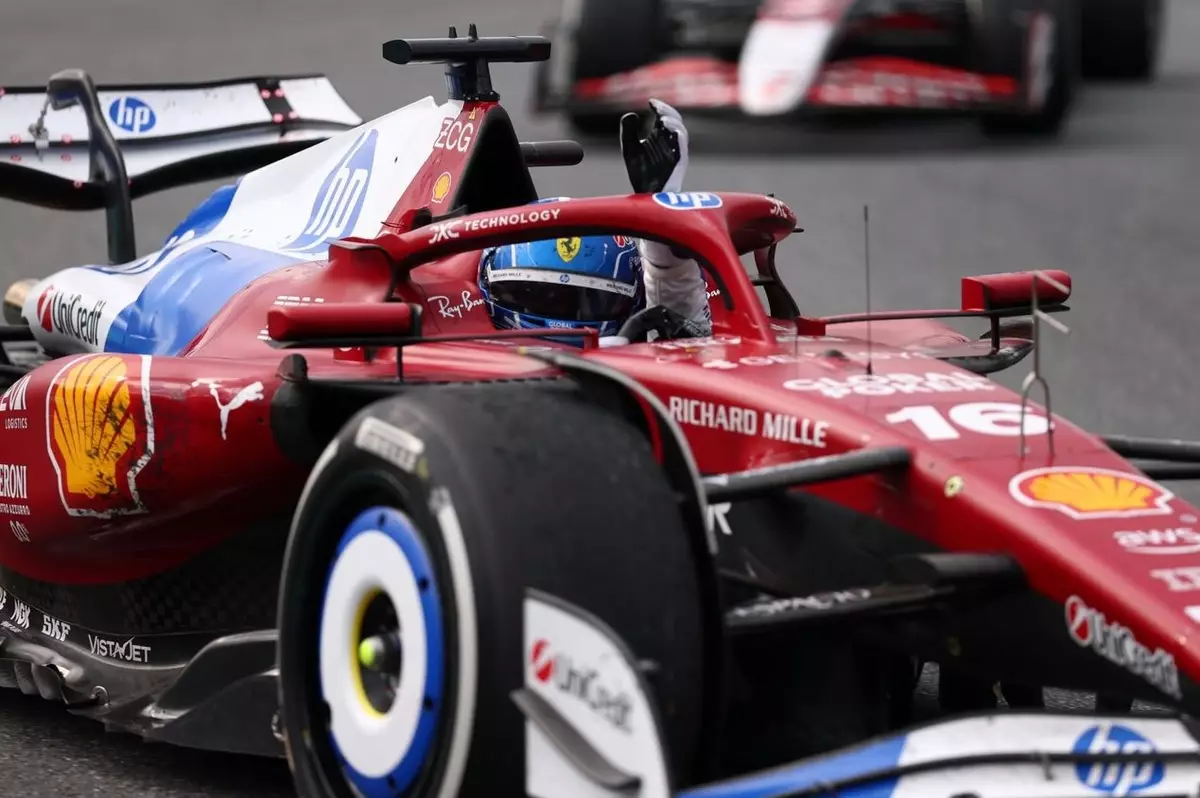The Miami Grand Prix, initially portrayed as a thrilling spectacle of speed and strategy, turned into a complex web of miscommunication and misjudgment for Ferrari. The situation between teammates Charles Leclerc and Lewis Hamilton served as a vivid reminder of the tactical dilemmas that can overshadow individual brilliance in the ultra-competitive environment of Formula 1. Fans of the sport expect nothing less than perfection from their teams, yet the reality often provides a more nuanced picture of shared struggles and unforeseen complications.
As the race unfolded, the narrative quickly shifted from high-octane racing to the nuances of team dynamics. Leclerc, who was navigating a challenging race for position, felt the heat as Hamilton, his seasoned teammate, demanded a strategy adjustment. Hamilton’s contention stemmed from his strategic tire advantage; he was on medium tires while Leclerc struggled on harder compounds. However, instead of a seamless collaboration, the situation spiraled into a series of communications that left both drivers stuck behind their own discontent.
The Emotional Toll of Competition
What becomes strikingly clear from Leclerc’s perspective is the emotional toll that competition exacts on drivers, even when they are united under the same banner. “No bad feelings” he insists, yet there’s an undercurrent of tension that belies such statements. The competitive spirit is innate in F1 drivers, compelling them to push boundaries and test limits—both on the track and with their teammates. Leclerc’s admission that he would have acted similarly if he were in Hamilton’s position showcases a subtle camaraderie, yet it also highlights an unsettling reality: the fine line between teamwork and individual ambition can often blur in high-pressure situations.
Hamilton’s frustration came through loud and clear over the team radio, yet it was Leclerc’s internal battle that added layers to an already tense scenario. Fan perceptions often tend to simplify rivalries to mere on-track duels when, in reality, emotional layers entwine with strategic calculations. The radio exchanges, as illuminating as they are, fail to encapsulate the emotional fatigue that both drivers endured.
The Room for Improvement
Leclerc’s candid reflection on Ferrari’s strategy underscores a critical point: even top-tier teams are vulnerable to errors. “We need to do better,” he states, hinting at an important self-awareness within the team structure. His recognition of a need for deeper communication reflects not only his maturity as a driver but an appreciation for the collective effort that a Formula 1 team embodies. Missteps, particularly in tight races, spotlight the importance of resilience and adaptability—two qualities essential for success in an arena where every millisecond counts.
This type of introspection holds powerful ramifications. The racing world would benefit immensely from prioritizing internal communication, especially during races where decisions can hinge on immediate circumstances. It begs the question: how do teams ensure driver’s preferences and perspectives are accounted for, while still prioritizing the overall objective of the race?
The Bigger Picture: Racing as a Team Sport
Ultimately, it’s the ethos of teamwork that binds the Formula 1 community. Stories like Leclerc’s and Hamilton’s open a window into the culture of modern racing, revealing that it is often a complex ensemble of personalities, vulnerabilities, and shared goals. The Miami Grand Prix may not have ended in resounding triumph for Ferrari, but the lessons gleaned from that race transcend mere statistics. They remind both drivers and fans alike that behind every exceptional performance lies a web of emotional investments, strategic shortcomings, and, ultimately, a quest for excellence against all odds.
Leclerc’s articulate acknowledgment of the need for improvement is not just a driver’s response to discontent; it symbolizes a broader understanding within Formula 1. The interdependence of drivers creates an environment where success is celebrated collectively, while failures prompt necessary reflection. It’s this intricate relationship that enhances the drama of the sport, drawing fans back for more, race after race. In the face of controversy, unity remains the ultimate key to overcoming challenges on and off the track.

